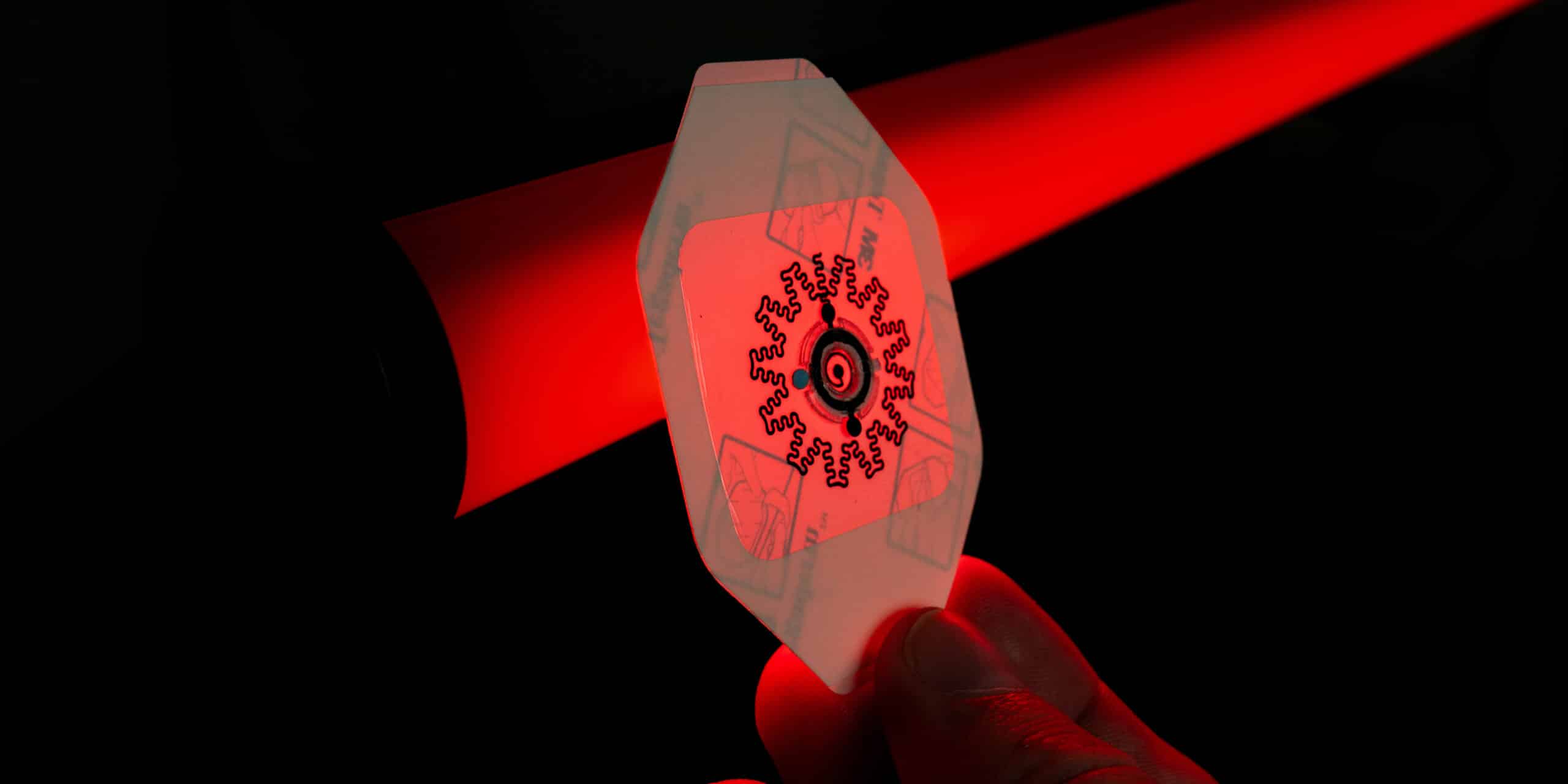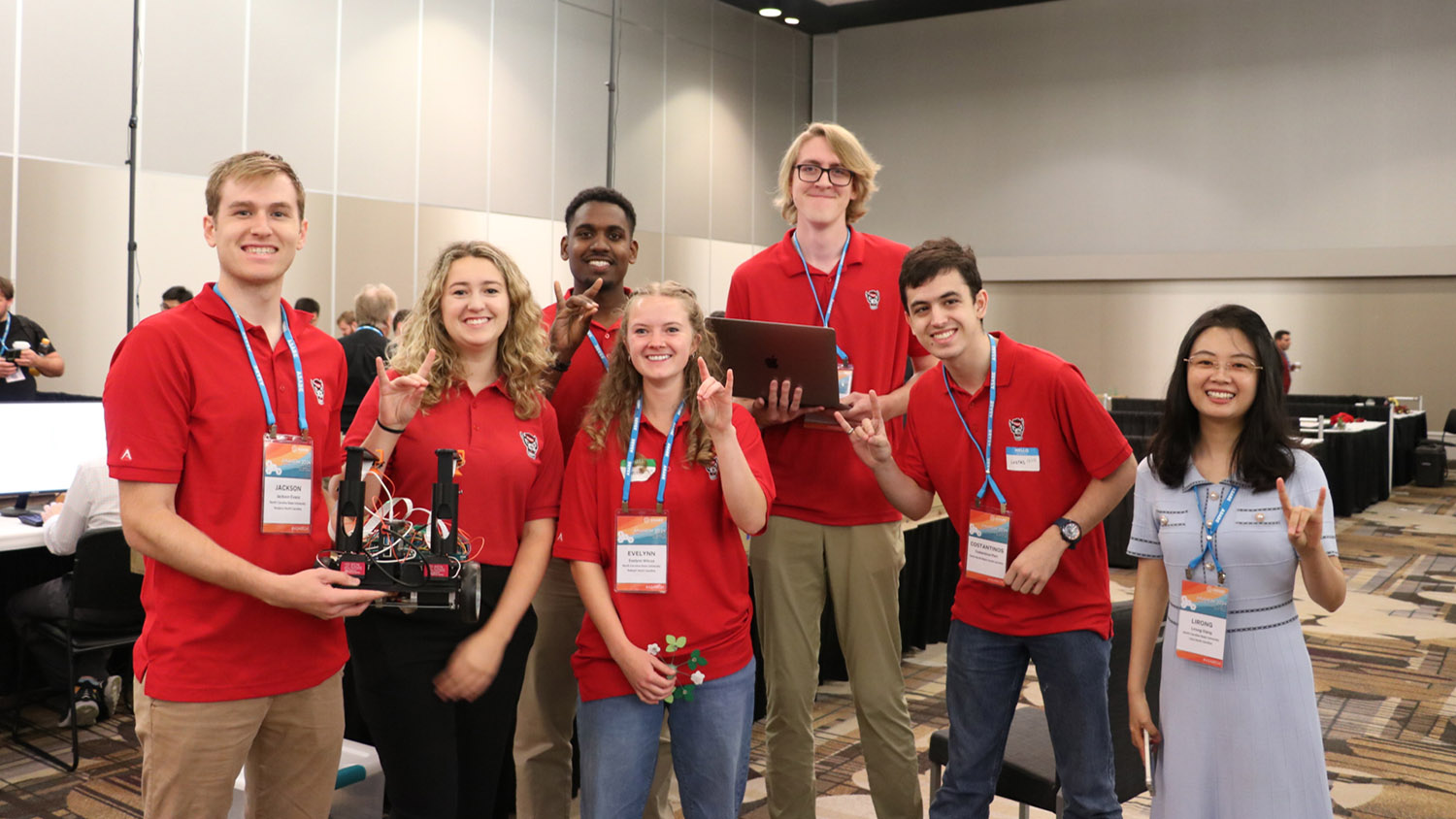Graduate growth

 Armed with an undergraduate degree in materials science and engineering, Alexandria Cruz could have joined the workforce after her University of Florida commencement ceremonies in June 2015.
Armed with an undergraduate degree in materials science and engineering, Alexandria Cruz could have joined the workforce after her University of Florida commencement ceremonies in June 2015.
Job prospects for engineering graduates are strong. Eight of the top 10 highest-paying majors for new undergraduates in a 2016 Forbes survey were in engineering or computer science.
Instead, Cruz took a month off after graduation before beginning a Ph.D. program in the Department of Materials Science and Engineering at NC State.
With help from a three-year National Science Foundation (NSF) graduate research fellowship, she is working in Dr. Justin Schwartz’s research group on multiferroic magnetic composites with applications in sensors, signal filters, high-frequency devices and more.
Cruz says she has heard of fellow engineering undergraduates who went straight to work, only to find themselves stagnating in their positions in a couple of years. With an eye toward a career in industry, Cruz says that staying challenged in her work is a priority.
“The thing I like about school is that I get to learn something new every day,” she said. “I really hope that I can continue my learning even after I go into the workforce, not just do the same things every day.”
There are more Ph.D. students like Cruz enrolled in the College than in years past.
When Dr. Louis Martin-Vega, dean of the College, arrived on campus in 2006, there were about 7,500 students in the College and about three undergraduate students for every graduate student. Today, with a population in excess of 10,000 students in engineering and computer science, there are two undergraduate students for every graduate student. More than 35 percent of all graduate students at NC State are in engineering.
This decade-long push to grow graduate enrollment is designed to increase the College’s national prominence.
As the College’s research capacity expands, the nation and world benefit. NC State engineering researchers are driving innovation in energy, infrastructure, healthcare and other fields.
More graduate students mean more capacity for research, which leads to increased funding, research centers and higher-quality faculty members. Getting those things helps attract a higher number of top-notch graduate students in what becomes a productive cycle.
“The reputation of a college of engineering nationally and internationally is driven primarily by what it does at the graduate level and what it does with its scholarly contributions,” Martin-Vega said. “Where do the scholarly contributions come from? They come from the Ph.D. students.”
Bigger and better
 Across the country, colleges of engineering are making large commitments with an eye toward expansion. Engineering graduates earn excellent starting salaries and the research and extension efforts coming out of engineering schools have a positive impact on their communities.
Across the country, colleges of engineering are making large commitments with an eye toward expansion. Engineering graduates earn excellent starting salaries and the research and extension efforts coming out of engineering schools have a positive impact on their communities.
For many of these schools, NC State included, growth means expanding at the graduate level.
As part of its 2011-2020 strategic plan, the University made a commitment to slow its undergraduate student growth with an eye toward graduate education and research. The College has followed the same path.
In one of the fastest-growing states in the country, and with high demand for undergraduate engineering education, the College has found a way to provide a quality experience for undergraduates while also growing the master’s and Ph.D. programs.
Stronger graduate programs mean more opportunities for NC State engineering undergraduates to pursue a master’s or Ph.D. And the College offers a strong undergraduate research program as a result of its growth in research capacity. The ability to do research as an undergraduate is a tremendous advantage for students, whether they end up continuing their education after graduation or going directly into the workforce.
Other benefits to the College in expanding graduate education can be seen in the growth in research awards and expenditures as well as the College’s success in landing leading roles in federal research centers. The College is one of only two colleges of engineering in the country to lead two NSF Engineering Research Centers, and research expenditures in the College have grown from $127 million to more than $179 million since the 2009-10 academic year.
Two-thirds of the College’s revenue is based on grants and contracts, Martin-Vega said. Those grants and contracts support Ph.D. students but if you don’t have great Ph.D. students, you won’t get the grants and contracts. The two rely on one another to grow.
A golden age of engineering
Dr. Douglas Reeves thinks that there has never been a better time to earn an engineering degree.
“I have never seen it this good in terms of opportunities, in terms of the recognition of the importance of engineers, in terms of the impact that engineers have on our daily lives,” said Reeves, a professor of computer science and the College’s associate dean for graduate programs. “To me, this is a golden age of engineering.”
Along with outstanding job prospects, engineering graduates have an opportunity to make this a better world.
So how do schools of engineering convince new graduates with outstanding job prospects to sign up for more grueling schoolwork?
For Gilbert Castillo, part of the motivation for pursuing a Ph.D. came with the realization that he enjoys doing research.
The recipient of a GEM Fellowship, Castillo is in his fifth year of a Ph.D. program in the Department of Chemical and Biomolecular Engineering. Working with Eastman Chemical Company, he is modifying polyester surfaces for display applications on electronic devices with improved moisture barrier properties and better resistance to scratches and even smudges. The ultimate goal is to use the surfaces in flexible displays.
At the end of 2016, Castillo had just published a paper and was finishing a second manuscript. He submitted two patent applications in August and was writing his thesis with an eye toward defending in May. He also found time to enter and win the 2016 NC State Graduate School Three-Minute Thesis Competition, in which Ph.D. candidates learn to break their complex thesis topic into a short, compelling presentation that a lay audience can understand.
At the master’s level, degree programs in the College have increasingly become professionally focused rather than research focused. And in many cases, students can earn a dual bachelor’s and master’s in five years, greatly increasing their job prospects.
A Ph.D., though, is a four- or five-year commitment.
Tyler Goode was a mechanical engineering undergraduate student at the University of Alabama doing an internship at NASA’s Marshall Space Flight Center in Huntsville, Ala. when he was invited to sit in on a meeting with local business executives in the aerospace industry. What he heard stuck with him.
“They were really hammering grad school as something that’s necessary to advance your career,” he said.
Goode began a master’s program in mechanical engineering at NC State in fall 2015. He plans to finish that degree this spring and continue on to earn a Ph.D. His master’s work is being funded by the Department of Defense (DOD) for his work with Dr. Mark Pankow’s Ballistic Loading and Structural Testing (BLAST) Lab in the Department of Mechanical and Aerospace Engineering. Goode received a NSF fellowship that will support his Ph.D. studies.
His current DOD research involves developing ways to test ballistic impacts on body armor with new techniques that let researchers see what’s happening to the inside of the armor — something that is difficult for researchers because their view is obscured by the wearer’s body.
Attracting the best
The College’s departments use several methods to recruit the best graduate students.
Faculty members attend conferences with a large concentration of potential graduate students. Along with encouraging current engineering students to apply, the departments use services that provide information on students who have expressed an interest in graduate education in certain engineering disciplines or have posted strong scores in certain standardized tests. Broad-based marketing and communication about the outstanding work being done in the College plays a role, too.
The payoff for the College comes in increased research impact and more national prominence. That research, in turn, leads to societal change and drives economic development, especially in North Carolina. It’s also a key part of achieving the goal the College has set under Martin-Vega’s leadership — to become and be perceived as the leading public college of engineering in the country and one of the premier colleges of engineering in the world.
Return to contents or download the Spring/Summer 2017 NC State Engineering magazine (PDF, 3.7MB).
- Categories:


